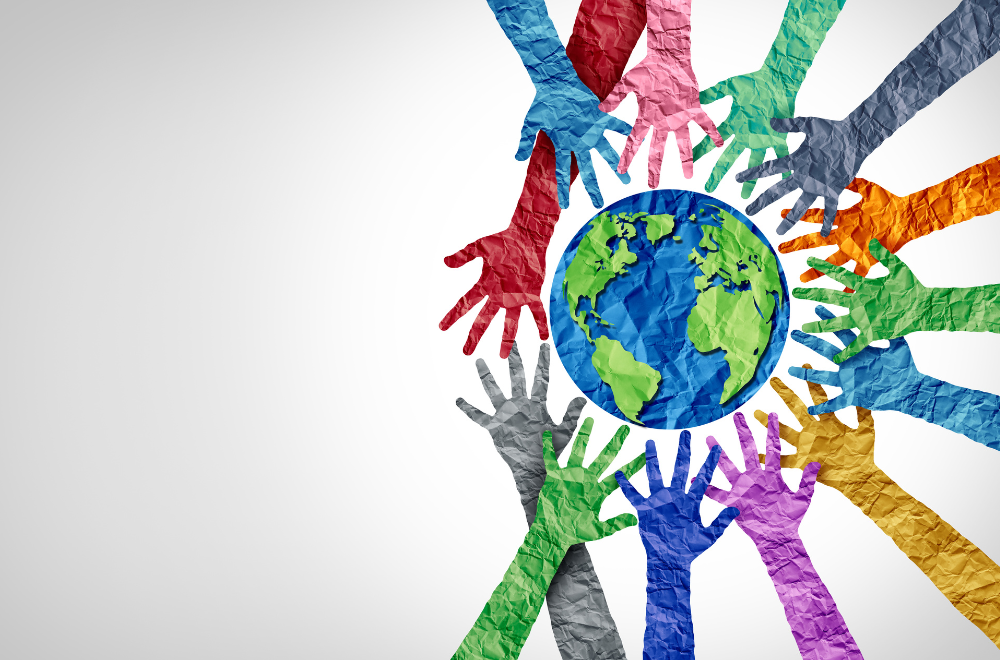It’s Time to Rewrite the Script
When I say I study, teach, and equip leaders to shape culture, many people excitedly make a connection, sharing this famous quote by Peter Drucker, renowned management consultant:
“Culture eats strategy for breakfast.”
Sure, it’s catchy; but the reason people remember and recite it is because it oh so true! Culture is powerful! It can dig in its heels, it can be totally silent–unbothered by new ideas that it doesn’t find interesting, or it can erupt.
We are in one of those moments now. Where culture is erupting with energy (nicest word I could come up with), and strategies to adjust and adapt are being thrown about–at an unbelievable rate. As many of us try to adjust and find our way within this new environment, we have no choice but to pay attention to culture and our role in it.
Culture is the invisible force shaping how we see the world and interact within it. It encompasses the values, beliefs, norms, and behaviors a group develops to ensure survival and continuity. As anthropologist Edward T. Hall famously observed:
"Culture hides much more than it reveals, and strangely enough what it hides, it hides most effectively from its own participants."
Hall’s insight rings true for those of us who find ourselves regularly surprised by what we see, hear, and experience—even from people who share our national, state, or institutional culture. How can we be in the same system yet perceive it so differently?
In organizations, culture influences how decisions are made, how employees engage, and how the organization adapts to challenges. But, so many times, we fail to actually see culture. To do that, we must look beyond the obvious.
Culture Guides Perception
Culture filters how we interpret the world. It determines what we notice, what we value, and how we respond—often without us even realizing it. From childhood, we absorb spoken and unspoken norms that shape how we navigate social and professional environments.
In the workplace, culture influences:
- Who speaks first in a meeting (hierarchical vs. egalitarian structures).
- How conflict is handled (direct vs. indirect communication).
- What is celebrated (individual achievement vs. team collaboration).
These subtle yet powerful distinctions dictate how organizations function and how people experience belonging and success.
Why Does Culture Change?
Culture is constantly evolving in response to internal and external pressures, including:
- External Shifts: Economic trends, technological advancements, societal movements.
- Internal Dynamics: New leadership, shifting employee demographics, misalignment between stated values and actual practices.
- Gaps in Effectiveness: Outdated processes that no longer serve the organization’s needs.
Yet, culture resists change because it provides stability and identity—what organizational development expert Edgar Schein calls “us-ness.” That’s why intentional, sustained effort is required to transform it.
Managed vs. Unmanaged Cultural Change
Unmanaged Change
This happens when external events or internal pressures disrupt the status quo. Without a clear vision, people feel unsettled and uncertain, often retreating into self-protection mode, waiting for someone else to lead the way. The result? A culture shaped by reaction rather than intention.
Managed Change
Deliberate cultural transformation is guided by leadership, a shared vision, and alignment with core values. It amplifies strengths while addressing barriers. It’s not easy—but it puts us in the arena. It challenges us to use our collective power to create something better.

Culture Is How We Live Our Values
Culture change isn’t just about policies or practices—it’s about how we define and live our values. Change is driven by either aspiration or fear. When we lack a clear vision of what’s possible, fear takes over. But this is no time for fear. We’ve seen this movie before, and we were not the heroes. Time to rewrite the script.
Action Steps for Cultural Change Agents
🔹 Own the Narrative. If we don’t speak openly and constructively about our values, we leave space for others to define them for us. Be vocal. Be clear. Define what matters and why.
🔹 Stand Firm in Core Values. What is the positive cultural core that unites us? What shared values will guide us through uncertainty? Anchor to them. They are both our strength and our compass.
🔹 Be Courageous, Generous, and Supportive. The past few years have been intense—pandemic, racial equity movements, economic instability, political uncertainty. Not everyone has the same energy level at the same time. Support those stepping forward and create space for others to regain their strength.
🔹 Find Your People. We are not alone. There are many of us who aspire to a world free of fear, hate, and marginalization. Seek out and connect with those who share your vision for change.
Now is the Time
Culture doesn’t shift overnight, and it doesn’t shift without effort. But it does shift when people choose to step up. If we want a different future, we must create it—together.
Who’s in? And what role are you playing?
Explore Our Programs & Calendar
Whether you’re a manager looking for in-depth skill development, a leader wanting to broaden their knowledge of EDI concepts, a hiring manager wanting to lead change, or an individual contributor needing structure and support for bringing well-being into focus, our learning & development programs are for you!.png?width=2250&height=813&name=Add%20a%20little%20bit%20of%20body%20text%20(3).png)

